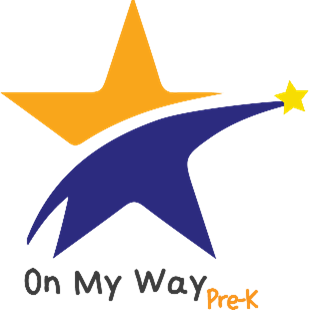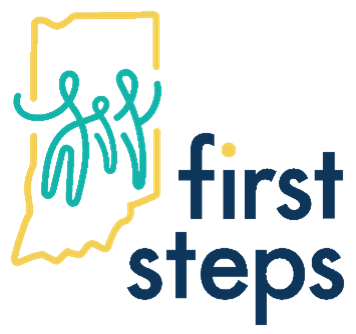Article
Highlighting early childhood initiatives in Indiana
Each April, the National Association for the Education of Young Children celebrates the Week of the Young Child. The Indiana chapter of this organization dedicates the entire month to focus attention on early childhood programs that meet the needs of children in Indiana.
Profile on young Hoosier children
There are over 504,000 children under the age of 6 in Indiana. This population is concentrated in the central, northwest, southwest and northeast parts of the state in areas surrounding Indianapolis, Fort Wayne, Evansville and Hammond. Two-thirds belong to a family with married couple, while the remaining third are in single-parent households. 64% of young children need care due to both parents working. The racial and ethnic breakdown of this population is 82% white, 14% Black, 3% Asian, 1% American Indian and 11% Hispanic.
22% of young children in Indiana are living below the federal poverty level. There are 25 counties that report 25% or more of children living in poverty; Adams, Perry and Grant counties have highest percentage of children living in poverty at 39%, 37% and 35% respectively.
Source: Early Learning Advisory Committee, 2020 Annual Report
During the beginning years of life, young children grow and achieve various developmental milestones. A few of these milestones include waving and walking (1 year milestone), following one-step directions (18 month milestone), joining other children to play (3 year milestone), and counting (5 year milestone). Some children experience delays in cognitive, physical, communication, social emotional and adaptive development due to physical or mental conditions that are diagnosed. The prevalence of developmental delays is estimated to be at 17%, which translates to 1 in 6 children nationwide.
Source: Centers for Disease Control and Prevention
Background on child care and early childhood education in Indiana
As of 2020, there were over 4,700 early care and education programs in Indiana serving roughly 114,000 young Hoosiers. The Economic Policy Institute reports that child care in Indiana costs an average of $9,557 a year for a 4-year-old, while infant care comes in at $12,612. At a county level, Hamilton Co. reports the highest cost of care at $1,015 per child per month, and Rush Co. is the lowest, at $296 per child per month. These overall costs represent approximately 22% of a median family's income, which is three times the affordability standard of 7%, according to the U.S. Department of Health and Human Services.
Child care has been a popular topic during the COVID-19 pandemic, as providers across the state and country struggle to stay open amid infections and workforce shortages. Over 1 in 4 Hoosier families with children under the age of 5 reported being unable to send their children to a child care provider. This resulted in job terminations and resignations, loss of hours, or taking unpaid leave.
Connection to FSSA
The Office of Early Childhood and Out-of-School Learning, a division of FSSA, oversees child care and early learning provider licensure, technical assistance, learning management systems, quality measures, and several related programs. Key initiatives that you may be familiar with include: 
- Child Care and Development Fund: a voucher program that provides families of over 35,000 children with affordable child care
- On My Way Pre-K: a grant program that enrolls eligible 4-year-olds in a high-quality pre-kindergarten program. Almost 4,800 Hoosier children are currently enrolled for the 2021-2022 school year. You can review the enrollment dashboard to see what program participation looks like in your county.
The office has a child care finder website to help Hoosiers locate providers that fit their criteria.
First Steps, a program within the Division of Disability and Rehabilitative Services, serves children in their first three years of life with diagnosed developmental delays or disabilities. This program connects children with participating early interventionists that specialize in medicine, nursing, nutrition and various therapies. You can see how a family in Anderson connected with First Steps here.
From July 2019 to June 2020, over 27,000 children were referred to First Steps and evaluated to determine service eligibility. During that same period, over 23,000 children had an individualized family service plan and received early intervention services.
The First Steps team is working with researchers at the Indiana Institute on Disability and Community's Early Childhood Center to explore racial inequities in the current system specific to the experiences of Black families and children. More details on this study can be found here.
Resources
- Early Learning Indiana's data center is home to maps and profiles of the state's child care and early learning environment.
- TED Talk: How every child can thrive by five
- Equity in child care is everyone's business
- Assessing child care subsidies through an equity lens
Next steps
- Visit OnMyWayPreK.org to see if your child is eligible for a grant for the 2022-2023 school year
- See how On My Way Pre-K children outperform peers as they enter elementary school
- Locate your local First Steps office to see where children with developmental delays can connect to services
Other observances in April:
- Autism Acceptance Month – time to educate individuals on how to support and provide opportunities to persons with autism
- National Child Abuse Prevention Month – opportunity to strengthen families and children to prevent child abuse and neglect
- Community Service Month – honors and brings attention to the benefits of volunteering in one's community
- Celebrate Diversity Month – time to acknowledge one's differences and encourage engaging in different cultures, perspectives and lifestyles
- Fair Housing Month – commemorating the passage of the Fair Housing Act of 1968
- Ramadan – religious observation by the Muslim community as a month of prayer, reflection and community
- Passover – Jewish holiday commemorating the exodus of the Israelites from slavery in Egypt
- Easter – Christian holiday celebrating the resurrection of Jesus Christ
- Earth Day – first celebrated in 1970 as a day to support environmental and global protections
